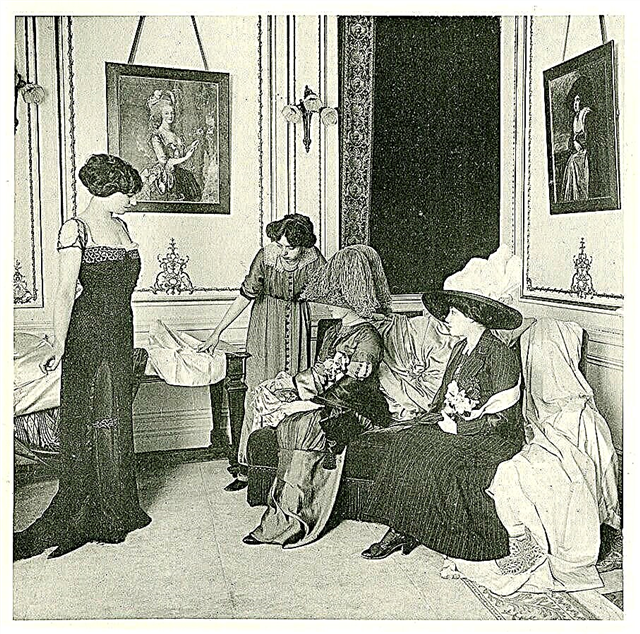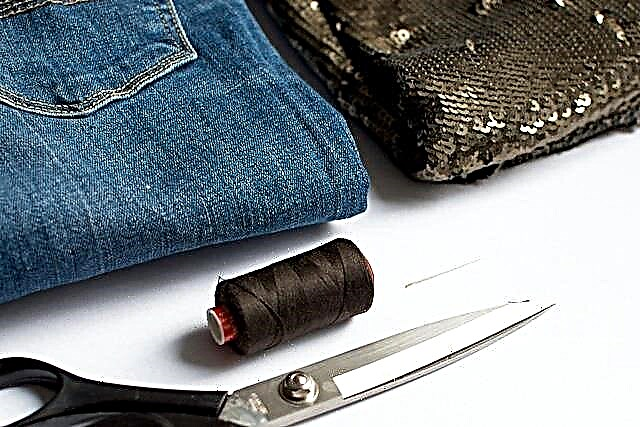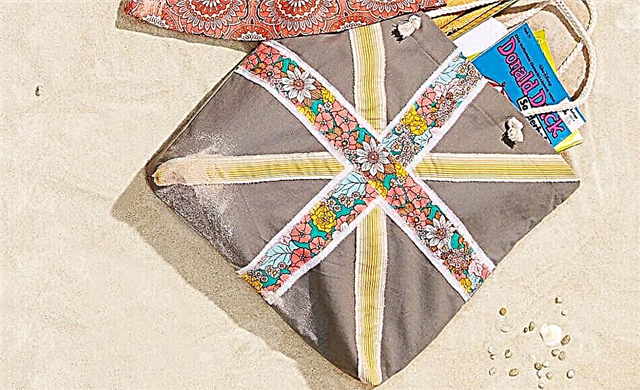For several decades, fashion shows have gone from private half-closed events to grandiose shows broadcasted to the whole world. We recall the history and trace the evolution of fashion shows and Fashion Weeks.
Defile: how it all began
The defile father is often called Charles Frederick Worth, a French couturier who was born in England, one of the main designers of the century before last, who was among the founders of Haute Couture. In the 1860s, Worth came up with a revolution in the fashion industry: instead of showing clothes on sketches or on mannequins, as it was before, he put real creations of real women on his creations to show the clothes to clients. His wife, Marie-Augustine Berne, who is now called the first fashion model, made her debut in front of the audience in designer outfits. However, despite numerous services to the fashion world, Worth's shows, strictly speaking, could not be called a defile. The fact is that the world's first shows were held in a specially equipped small room at the studio: the client sat, the models went out and stood in front of him. The word défilé (translated from French as "narrow passage between certain obstacles") in the designation of fashion shows began to be used later, with the change of "landscape" and scenery.

Photo: dressedpodcast.com
Charles Frederick Worth Atelier Fashion Show
The first show, the concept of which is close to modern fashion demonstrations, was invented by Lucille, a British fashion designer, at the beginning of the 20th century. Lucille was a pioneer in many ways: it was she, for example, who proposed changing women's corsets to more comfortable lingerie, something reminiscent of bras, and came up with skirts with a slit. Lucille also approached the demonstration of her models in an extraordinary way. Firstly, the showroom has become quite large: now it was divided into seats for spectators and a kind of scene on which fashion models passed, and fashion was also shown in the open air. Secondly, the shows went to the music and ended with a small buffet table, which made them look like a stage show and a party combined. Thirdly, these shows are much more public events than before: before each, invitations were printed for guests.

Photo: ifwartistsblog.wordpress.com
Lucille Fashion Show
By the beginning of the twentieth century, the popularity of such methods of demonstrating mods began to increase. Another pioneer in the organization of the defile is the great Frenchman Paul Poiret. His fashion shows sometimes became real performances, in many respects similar to the current magnificent defile. In the big hall, they gathered a lot of guests, behind the scenes special "dressing rooms" were organized, the ancestors of the current backstage, and then parties were organized like modern afterparties. But, one way or another, all these displays were primarily informational in nature: they were intended primarily not to amaze and amuse the gathered guests, but to give them the opportunity to choose their favorite models of clothing so that they can be purchased afterwards.

Photo: lauradahl.com
Paul Poiret fashion show
The first walk of the models on the catwalk in its modern form - a scene in the form of a long "tongue" - was arranged in New York in 1931 by a French fashion designer (by birth an Italian aristocrat), the creator of the concept of "ready-to-wear" Elsa Schiaparelli. Apparently, Schiaparelli, who loves to break down stereotypes, should be considered the “mother” of fashion shows in the modern sense of the word - it was at her shows that the fashion show acquired a theatrical character, receiving signs of an amazing, sometimes surreal show.

Photo: schiaparelli.com
Schiaparelli models at the show
Sewing machine: history of invention and evolution
How fashion weeks came about
Throughout the first half of the twentieth century, fashion shows were equally popular on both sides of the Atlantic, while the fashion scene in New York was more often dominated not by American, but by European (primarily French) designers. However, with the beginning of World War II, the situation changed - it turned out that it was the war that laid the foundation for the phenomenon, now unprecedented in importance for the entire fashion world, Fashion Weeks. In 1940, when Germany occupied France, Paris was virtually closed, and the world of American fashion was left without significant European influence. In 1943, the famous American publicist Eleanor Lambert gathered in New York, fashion designers and designers from the United States to hold "Press Week". The editors of fashion magazines were finally able to appreciate the American style, and the world received the first Fashion Week, which is still unofficial, but laid down the principles of such an event as such.

Photo: missmonet.net
Fashionable "Press Week" in New York, 1943
The second city in which Fashion Week was held was Paris - it happened in 1973. Next, the baton took Milan (1979). London became the fourth - the first Fashion Week was held here in 1984. The first official New York Fashion Week took place only in 1993, however, this city is considered the "progenitor" of the show.

Photo: harcourt-watches.com
Fashionable "Press Week" in New York, 1943
Enne Burda: A Success Story
Fashion Weeks Today
Today, New York, London, Milan and Paris make up the "Big Four" cities where the so-called "mandatory" Fashion Weeks (Fashion Week, abbreviated FW) are held twice a year. Women's shows are held in the indicated sequence and last a total of about a month, starting in February and September. These weeks are also called Ready-to-wear (the abbreviation RTW, translated - ready-made dress) or prêt-à-porter (ready-to-wear). Each of the weeks of the "Big Four" primarily shows collections of local designers (for example, London - British, Milan - Italian, and so on), but this is not necessary. The main thing is the lack of repetition: the designer cannot show the same collection at two weeks of the same season and generally twice.

Photo: blackfilmcenterarchive.wordpress.com
First Paris Fashion Week 1973
Men's collections are presented in September and from mid-June to mid-July: it all starts with London Fashion Week, then shows are held in Milan, Paris and New York. "Extra" Fashion Weeks are held by various major cities and capitals of the world - Australia, Bangalore, Manila, Jakarta, Berlin, Bangkok, Barcelona, Seoul, Tokyo, São Paulo, Los Angeles, Lodz, Hong Kong, Buenos Aires, Singapore, Toronto , Madrid, Moscow, Kiev and so on. There are also Haute Couture Weeks in which only certain haute couture houses are invited to participate (including Chanel, Versace, Valentino, Dior, Givenchy, Gaultier, Lacroix - a rather narrow circle, which, however, sometimes invite new participants). They take place every six months in Paris (January and July) and show the audience the extravagant creations of great fashion designers. There are also annual Weeks of wedding fashion, Weeks of beachwear, or swimwear, off-season, children's, jewelry Weeks.

Photo: savagebeauty.alexandermcqueen.com
Alexander McQueen's show that surprised the audience in 2009 at Paris Fashion Week was the last work of a fashion designer
Each such show - first of all it concerns the obligatory Weeks of the Big Four - becomes a big event for the city that hosts it. A huge number of guests gather shows - including owners of franchised boutiques from around the world, VIP-clients, celebrities and, necessarily, fashion press and photographers. A "mere mortal" can also get on the show - if he is ready to pay a round sum for the ticket (up to hundreds of thousands of dollars). Weekly shows take place on one or more of the catwalks. Models to music defile on the catwalk, showing outfits from the designer. At the end of each, the author of the collection and all the models who took part in the show go out to the audience of the show.The shows are broadcast on TV channels and online in live mode, while viewers also see “backstage”, that is, what happens behind the scenes: it’s where journalists often “catch” models and fashion designers to interview them.

Photo: veryinutilpeople. it
In 2014, Karl Lagerfeld and Chanel staged a show at the supermarket, inviting Rihanna to participate in the action.
Spring-Summer collections (Spring-Summer, abbreviated SS) show the fall of the previous year; Fashion shows for fall-winter collections (Fall-Winter or Autumn-Winter, abbreviated AW or FW) are held from February to March. This "postponement" of impressions is needed primarily for the convenience of buyers who need to have time to create purchase lists and bring collections to stores by the beginning of the season. But recently, in 2016, this trend has seen a "scrapping" in the form of a new system See now - Buy now ("Saw - Bought"). Some fashion houses (for example, Burberry and Tom Ford) began to showcase collections that immediately appear in brand stores around the world. However, while the tradition of “early” shows is much stronger than the new system, we can find out about the fashion trends of the new season much earlier than its onset.



